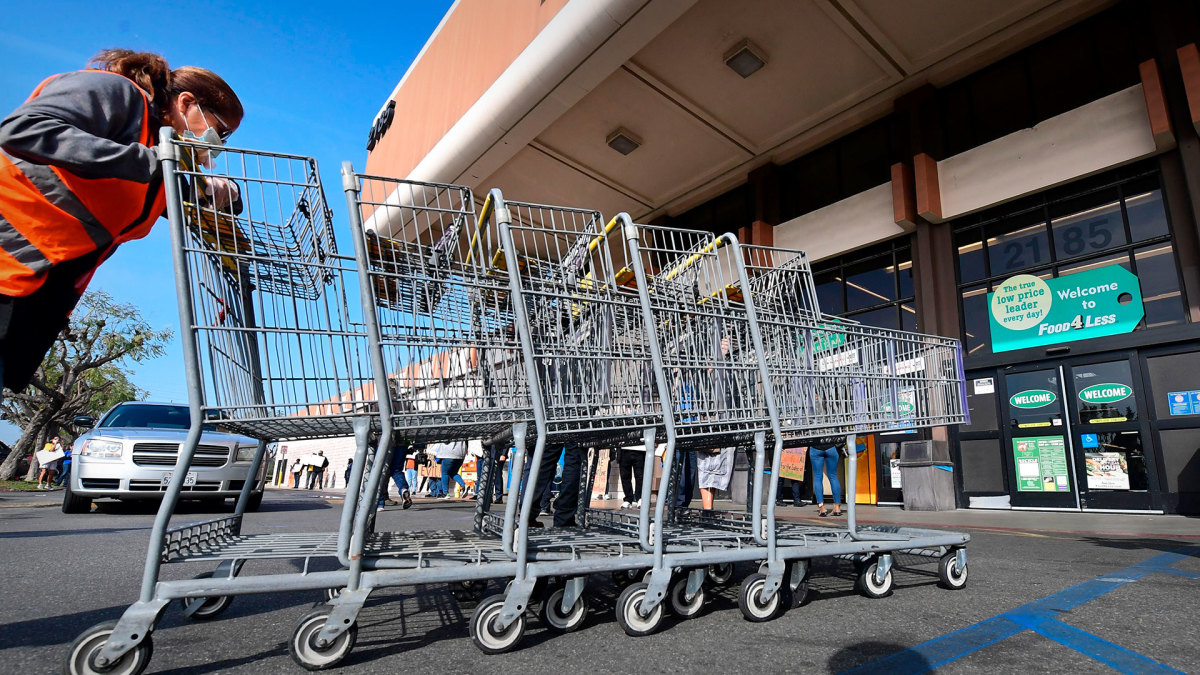
A couple of years ago, it may have just seemed like a CEO talking point.
But now, it seems that price inflation – or the cost of many goods and services rising in the United States – is something we can all agree on.
Related: Forget McDonald's: Walmart gets trendy new fast-food partner
In fact, it's hard not to notice the price of many things going up compared to where they were just a few months ago. Perhaps even a few weeks ago.
Whether you shop at niche specialty stores for your regular staples or big box discounters like Walmart or Costco, chances are you've noticed your dollar doesn't stretch the same way it used to. Almost everything – from electricity to chocolate – costs more.
The most recent numbers for the Consumer Price Index (CPI) show that prices in June fell by about 0.1% compared to May. The CPI increased 3% on a 12-month basis, a slightly smaller increase than the 3.3% we saw during the month of May.
Related: Struggling Home Depot rival files for Chapter 11 bankruptcy
This may sound like positive news. And any indication that inflation may be cooling should be welcome news to U.S. consumers and data watchers. But the fact of the matter is, prices are still up. And shoppers are still struggling.
New CPI numbers are expected this week
We'll get a better idea of how July's pricing compared to June's when the CPI comes out on Aug. 14. As it stands now, analysts are expecting the monthly numbers to rise by about 0.2% on all items as well as the core measurement, which accounts for less volatile items.
Related: CPI inflation report upsets betting on big Federal Reserve rate cut
As it stands now, though, the most recent data shows prices still ticked up. Here's a look at how some key goods and services changed month over month:
- Food at home: increase 0.2%
- Food away from home: increase 0.1%
- Energy: increase 0.4%
- Electricity: decrease 0.7%
- New vehicles: decrease 0.2%
- Used vehicles: decrease 1.5%
- Apparel: increase 0.1%
- Shelter: increase 0.2%
- Transportation services: decrease 0.5%
- Medical care services: increase 0.2%
"The food at home index rose 1.1 percent over the last 12 months. The index for meats, poultry, fish, and eggs rose 2.6 percent over the last 12 months and the index for other food at home increased 1.6 percent," the CPI reports.
More Retail:
- Ulta CEO sounds the alarm on a growing problem
- Lululemon releases a first-of-its-kind product
- Target store introduces a new 'over 18' policy
- Amazon launches genius new subscription product
"Over the same period, the nonalcoholic beverages index rose 1.5 percent and the cereals and bakery products index increased 0.5 percent. In comparison, the fruits and vegetables index fell 0.5 percent over the year and the dairy and related products index declined 0.1 percent."
Groceries are more expensive
And according to a new Lending Tree analysis, groceries in particular are putting the pinch on many Americans.
"It cost 1.8% less to buy a typical basket of groceries in July than a month earlier, according to a LendingTree analysis of 33 commonly purchased items. However, prices are 3.1% higher than three months ago and 2.0% higher than a year ago," the survey reports.
For example, the typical grocery bill now costs a consumer $86.18 – 2% more than the same period in 2023. That's a lot when you consider most Americans do their grocery shopping each week; a 2% increase will add up quickly.
Related: Costco introduces new (controversial) food court meal
Some items in particular have seen massive price surges compared to 2023. Those include:
- Large white Grade A eggs: Up 71.6% or $1.01 per dozen
- Broccoli: Up 68.7% or 68 cents per pound
- Bananas: Up 38.8% or 19 cents per pound
Looking month to month, the items with the biggest price increases from June to July 2024 include:
- Chinese cabbage: Up 228.2% or 89 cents to $1.28 per pound
- Chicken party wings (quick frozen): Up 189.1% or $5.03 to $7.69 per pound
- Organic cherry tomatoes: Up 172.0% or $3.44 to $5.44 per pint
- Honeycrisp apples: Up 112.4% or $2.08 to $3.93 per two-pound bag
Lending Tree also points out that sweet corn, large white eggs, bananas and celery each increased in price by at least 30% in July, but some of those prices have been offset by a decrease in pricing for some staples, including carrots, zucchini, and whole chicken.
Related: Veteran fund manager picks favorite stocks for 2024







